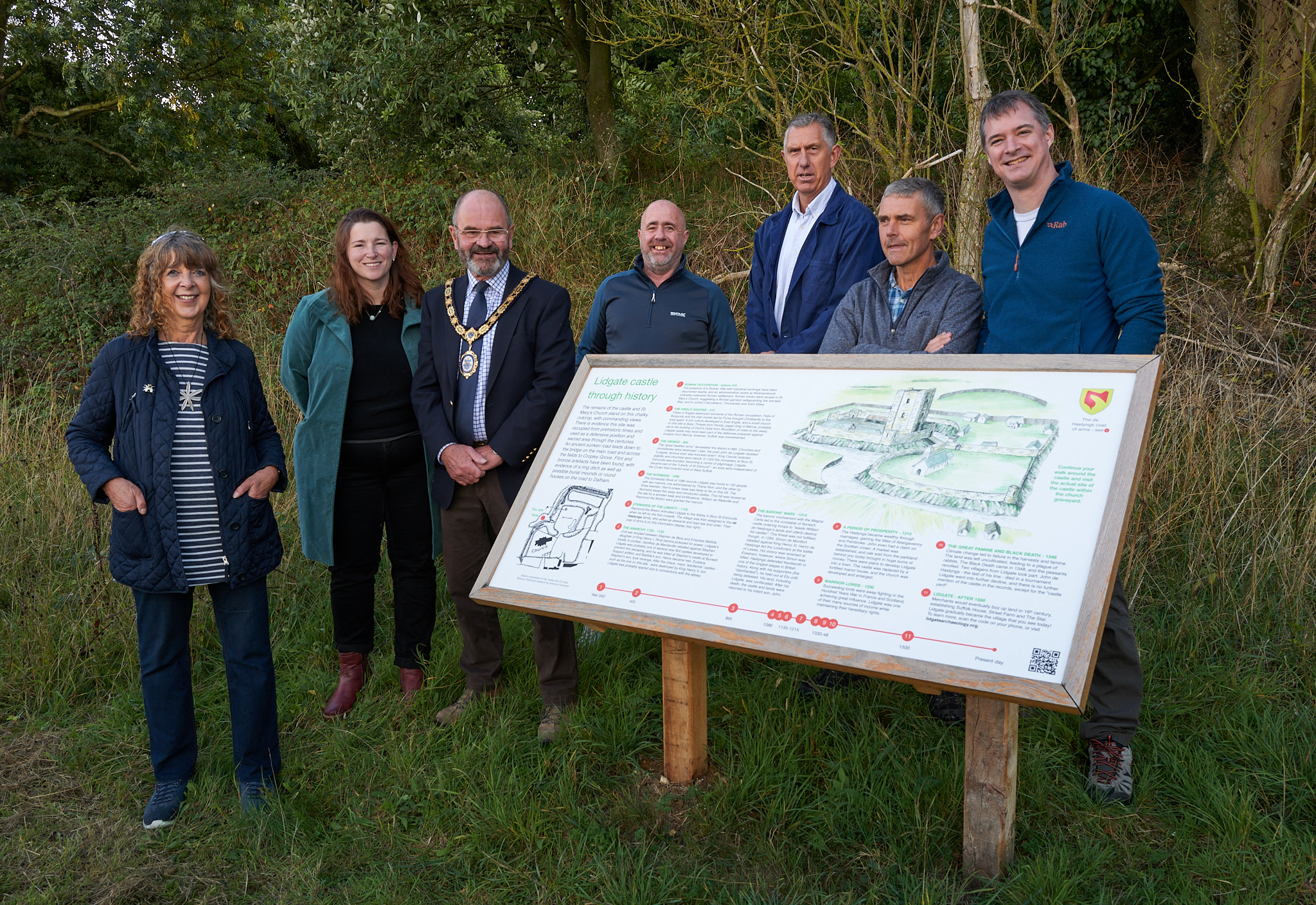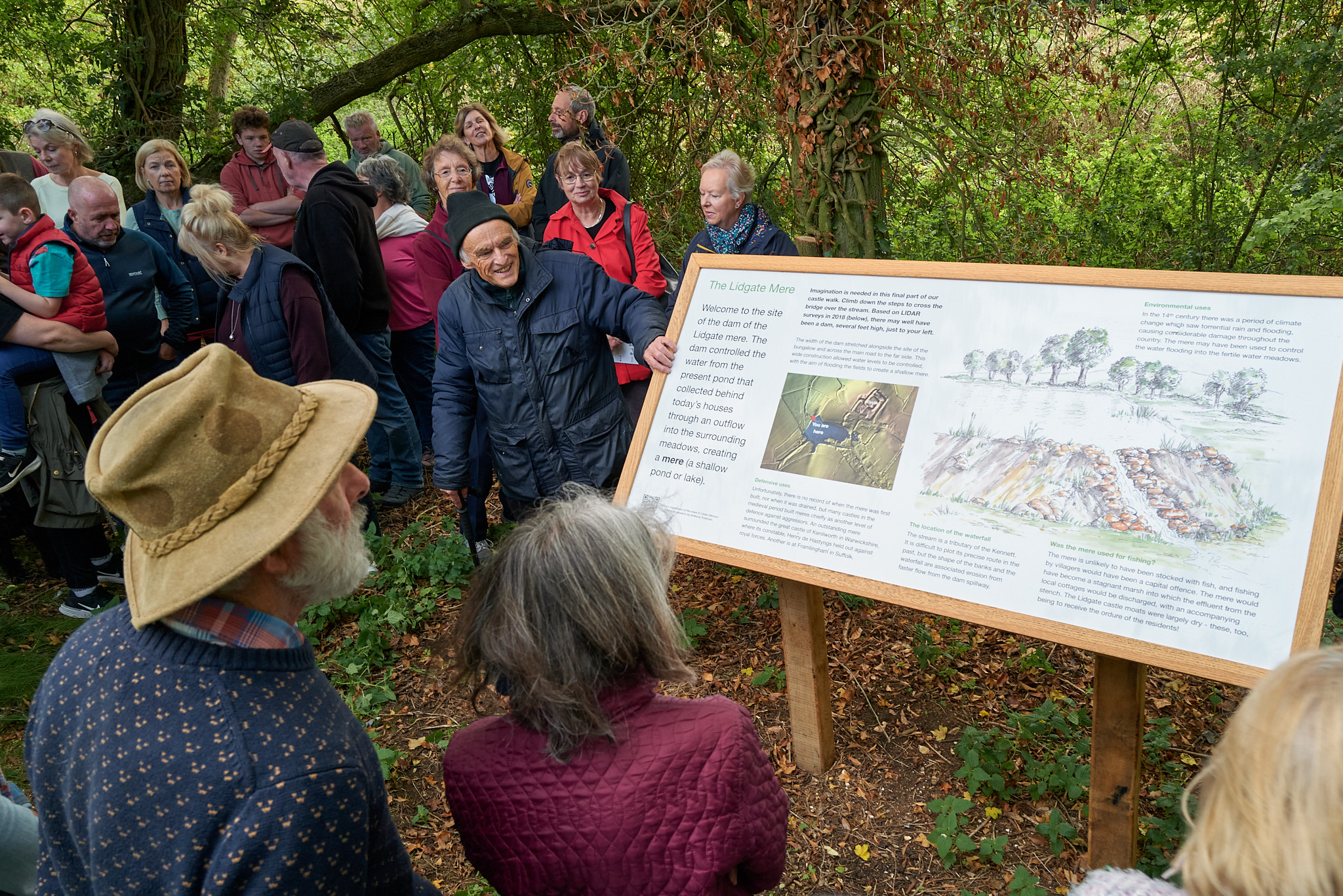Lidgate in Suffolk
has achieved an accolade placing it on equal footing with such historically
important sites as the Tower of London. Following a summer of research by Lidgate
Archaeology Group, Historic England has agreed to widen the Scheduled Ancient Monument
site of Lidgate Castle, in recognition of the national importance of the
remains of a medieval town known as a ‘planted borough’ that began to grow up
in its foothills, as well as its historic importance as a 12th
Century defensive site.
With its Roman
villa at one end and the C12th Castle site at the other, as well as beautiful
medieval St Mary’s church and many Listed dwellings, Lidgate offers
archaeologists and historians a treasure trove of opportunities to understand
our past. Now thanks to this announcement by Historic England the almost
uniquely undisturbed area around the one of Suffolk’s few castles will be
better protected.
The Scheduling has
now been enlarged to include the whole of the Inner and Outer Bailey as well as
the wider earthwork remains of the later C16th fortified manorial complex
including the Bailey Pond. This
re-assessment of the extent and importance of the castle remains has been made
possible by various investigations including topographical survey, trial
trenching, geophysical survey, LiDAR (remote sensing method used to examine the
surface of the Earth), map regression analysis and aerial photography, the
latter helped by this year’s wonderful dry summer.
Data gathered
strongly suggests that the surviving remains of the Castle extend far beyond
the previous scheduled area. Parts of
the external banks of the inner and outer castle bailey, the banks and ditches
defining the C16th remodeled fortified manorial complex, building platforms and
terracing south of the church and the Bailey Pond all lay outside the previous
protected area.
According to Historic England, “All these features have a high level of archaeological potential to further improve our understanding of the castle and the social and economic context in which it functioned.”
Commenting on the
importance of the site, Professor Mark Bailey of the University of East Anglia,
one of the world’s leading authorities on medieval England, said:
“Lidgate represents the only example in the county – and one of the few examples in the country – of an undisturbed medieval market place and planted borough inpristine archaeological condition. All other medieval boroughs in Suffolk still exist as towns and so their archaeological record has been mostly lost through constant rebuilding. This makes Lidgate a site of first rate importance.”
Professor Mark Bailey, University of East Anglia
Background
Lying on the ancient trade route between Clare and Exning, as a natural defensive site, a settlement may have existed at Lidgate during the Bronze Age or even earlier. There are hints of Roman occupation of the area and the village was said to have been laid waste along with Thetford and Cambridge by the Vikings as they invaded in 865 AD. The Castle may have been re-fortified in its surviving form during the civil war between the Empress Matilda and King Stephen in 1140s. St. Mary’s Church, located within the inner baileys, is famous for its outstanding medieval graffiti, including rebuses (rare coded musical graffiti) and a signature almost certainly that of the famous medieval poet John de Lydgate**.
In the 13th
Century, Lidgate’s ambitious baronial owner Henry de Hastyngs attempted to
develop the village into a wealthy town similar to nearby Long Melford or
Lavenham, investing in establishing a market place, defensive ditches, laying
out terracing for housing around the market and what appears to have been a
substantial lake at the foot of the castle hill (of which the village Bailey
Pond is the only remnant today). The fortified Castle site with a newly
laid-out fledgling town in its foothills may have been used by him as a
garrison during the turbulent Barons’ War uprising against King Henry III.
However, de Hastyngs had backed the wrong side, though he was pardoned by the
King, and he died shortly after the final fall of the barons at Ely in
1267. The castle was soon abandoned, and
trees enveloped its site covering the once imposing ditches and mounds, though
Lidgate market remained active until at least the 14th Century (C14). By the C15 the effects of long-term economic
decline following the Black Death meant the market and town fell into disuse,
and Lidgate has remained a small rural village to this day.
** John de
Lydgate, c1370-1450: who, with Chaucer, was regarded as one of the most popular
and important poets of his day, with patronage for his literary work at the
royal courts including that of Henry V of England. He coined the phrase ‘needs
must’.








